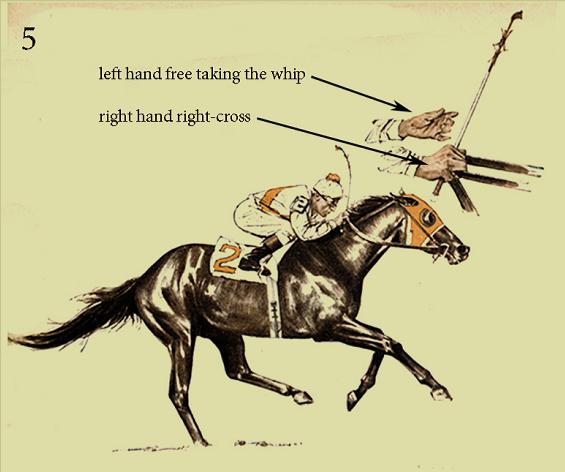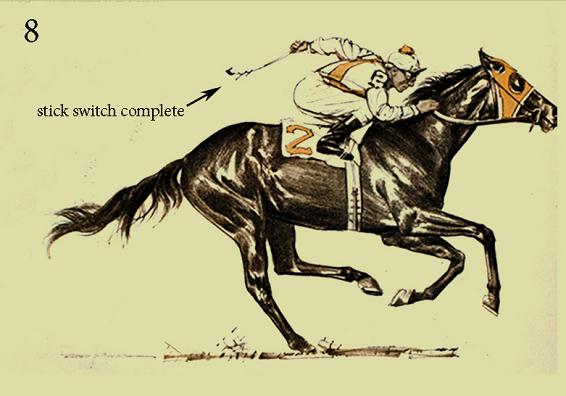3) Shorten Rein
First step in the switch is to reach forward on the right rein with my right hand in order to take ahold of the rein in a shortened position. At the same time, my left hand is holding the other rein tightly.
4) Left Rein Over
To make the right half-cross, I must now bring the left rein over into my right hand--by taking the left rein and bringing it above the horse's neck and then picking up the left rein with my right hand.
7) Whip Secure
By now, I have the half-cross in my right hand and the whip firmly in my left hand and cocked for the first stroke. As you can see by these drawings, the complete switch came within just two full strides.
8) Switch Complete
I am now ready to whip left-handed. The switch is difficult to explain for a number of reasons. One is that--for me, at least--the whole procedure is one continuous motion and when I'm doing it, I'm not conscious of exactly what I do. Another reason is that while I'm switching the whip, I'm never as aware of the mechanics of actually switching it as I am of two other very vital things:
1) maintaining control of the horse with the hand in which I hold the half-cross,
2) looking straight ahead.
I'll never allow myself, even for a split second, to look down at what my hands are doing. Most riders today are pretty good at switching the whip, although a few old-timers who never learned it as kids haven't bothered to learn since. The difficulty in teaching it to kids is that their first reaction is to freeze on the right hand so they can't get the whip out. Often they're liable to lose everything--reins and all. With practice, they should acquire a touch delicate enough to control the reins and still permit the whip to slip instantly free.



























